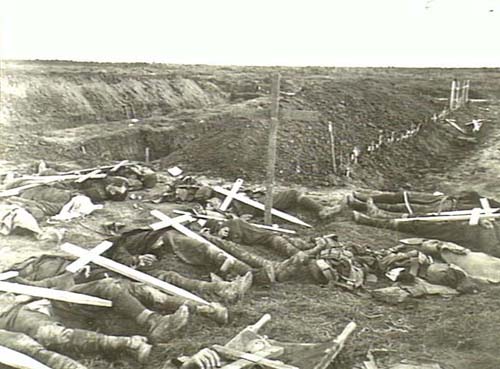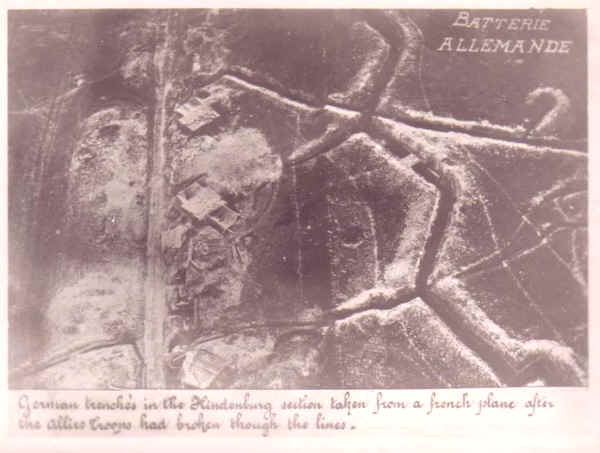The Hindenburg
Line- the last and strongest of the German army's defence - consisted of
three well-defended trench systems,
established in 1917. Throughout September 1918, Australian forces had
helped the British army to secure positions from which an attack on the
Hindenburg Line could be launched. Planning began for a major attack at
the end of the month. It was hoped that this attack would finally break
the power of the German army.
- Tomorrow we are to take part in the
greatest and most important battle that we have yet been in, for we
are to assault the Hindenburg Line, the famous trench system which
the Germans have boasted is impregnable.
- Diary entry, Captain Francis Fairweather, 28
September 1918.
On 18 September 1918, a preliminary
attack was launched when Lieutenant
General Sir John Monash's
troops reached the first part of the Hindenburg Line. At 5.20 am,
Monash's troops, supported by huge artillery barrages, attacked the
heavily fortified German defences and machine-gun posts. Using only
eight tanks (as well as dummy
tanks to distract the Germans),
they broke through German positions and took 4,300
prison.
Although there were 1,000 killed or wounded, this cost was fairly slim
compared to the losses of the German forces.
On 29 September, the line was finally
broken. Australian and US troops spearheaded this battle, given the task
of breaking defences in the centre. They attacked a strongly defended
sector at Bellicourt with tanks,
artillery, and aircraft working in concert. Advances were made, but it
was a struggle between the two forces. The fighting lasted four days and
resulted in heavy losses.
 |
American bodies from the fighting on
29 September, near Gillemont Farm, when men from the 27th American
Division attacked over the main Hindenburg Line.
(AWM E04942C)
|
Eventually, the Allies broke through
the third and final stage of the Hindenburg Line, and the Germans were
forced to fall back. In this attack, troops captured the entrance to the
St Quentin canal tunnel.

The Last Australian Fight- the Capture of
Montbrehain
An attack on 5 October was to be the
last in which Australian troops would take part. The last brigade fought
and took Montbrehain village, and with that, the Hindenburg Line was
completely broken. The defence of this sector was then handed over to
Americans troops, while the Australians, exhausted and depleted, were
withdrawn for a rest.
By this time, most Australian troops
had been fighting for six months without a break, 11 out of 60
battalions were disbanded because there were so few men left in them,
and 27,000 men had been killed or wounded since the Battle of Amiens.
The troops were worn and war
weary.
|